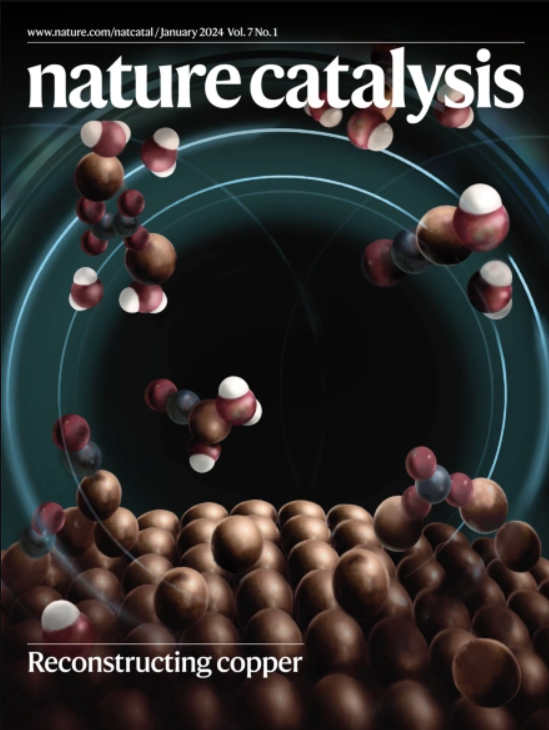Cobalt-catalysed alkene hydronitration enabled by anomeric nitroamide
IF 44.6
1区 化学
Q1 CHEMISTRY, PHYSICAL
引用次数: 0
Abstract
Tertiary nitroalkanes, as well as their reduced products, α-tertiary amines, play an essential role in drug discovery as either key synthetic precursors or final motifs in targeted molecules. Existing methods to prepare tertiary nitro compounds generally rely on polar-bond disconnections, in which strong bases or highly active electrophiles are needed. Here we report the development of an anomeric nitroamide-based reagent that enables selective metal-hydride hydrogen atom transfer-based Co-catalysed alkene hydronitration for the preparation of valuable tertiary nitro compounds. This mild, scalable reaction shows broad functional group tolerance. Its synthetic application is demonstrated via late-stage nitration of complex alkenes derived from drugs and natural products, and simplifying the synthesis of a rare naturally occurring nitro sugar. Simple access to isotopically labelled 15N-containing nitro compounds is also disclosed. The anomeric nitroamide reagent was deemed safe by energetic measurements and its reactivity rationalized based on X-ray crystallographic analysis. Synthetic methods to generate tertiary nitroalkanes are scarce. Now the cobalt-catalysed synthesis of tertiary nitro-containing compounds under mild conditions from easily available olefins is enabled by a nitro-transfer reagent containing an anomeric amide.


异头氮酰胺使钴催化烯烃加氢化
叔硝基烷烃及其还原产物α-叔胺作为关键的合成前体或靶向分子的最终基序,在药物发现中起着至关重要的作用。现有的制备叔硝基化合物的方法通常依赖于极性键断开,其中需要强碱或高活性的亲电试剂。在这里,我们报道了一种基于端粒硝基胺的试剂的开发,该试剂可以实现选择性金属氢化物氢原子转移基共催化烯烃加氢反应,以制备有价值的叔硝基化合物。这种温和的、可扩展的反应显示出广泛的官能团耐受性。它的合成应用是通过后期硝化从药物和天然产物衍生的复合烯烃,并简化了一种罕见的天然存在的硝基糖的合成。还公开了对同位素标记的含15n硝基化合物的简单获取。通过能量测量证明了该异头氮酰胺试剂是安全的,通过x射线晶体学分析证明了其反应性。
本文章由计算机程序翻译,如有差异,请以英文原文为准。
求助全文
约1分钟内获得全文
求助全文
来源期刊

Nature Catalysis
Chemical Engineering-Bioengineering
CiteScore
52.10
自引率
1.10%
发文量
140
期刊介绍:
Nature Catalysis serves as a platform for researchers across chemistry and related fields, focusing on homogeneous catalysis, heterogeneous catalysis, and biocatalysts, encompassing both fundamental and applied studies. With a particular emphasis on advancing sustainable industries and processes, the journal provides comprehensive coverage of catalysis research, appealing to scientists, engineers, and researchers in academia and industry.
Maintaining the high standards of the Nature brand, Nature Catalysis boasts a dedicated team of professional editors, rigorous peer-review processes, and swift publication times, ensuring editorial independence and quality. The journal publishes work spanning heterogeneous catalysis, homogeneous catalysis, and biocatalysis, covering areas such as catalytic synthesis, mechanisms, characterization, computational studies, nanoparticle catalysis, electrocatalysis, photocatalysis, environmental catalysis, asymmetric catalysis, and various forms of organocatalysis.
 求助内容:
求助内容: 应助结果提醒方式:
应助结果提醒方式:


